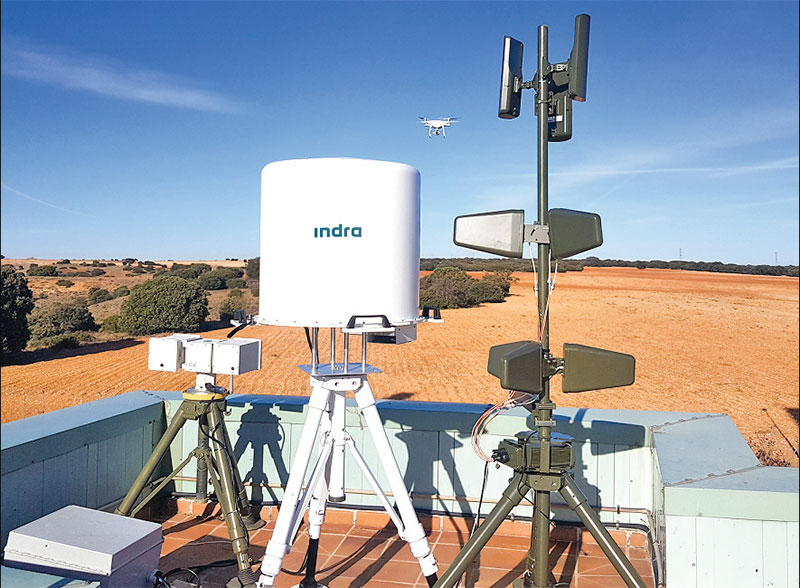Cheap drones are emerging as new vehicles of criminal activities
Yunus Dar
In early October 2019, personnel from the Border Security Force (BSF) posted near the India-Pakistan Border at Ferozepur, Punjab, spotted a drone entering the Indian territory. This wasn’t a new thing as the Punjab police have earlier on many occasions spotted a number of such Chinese drones, crossing the border purportedly to drop weapons and ammunition, or drugs to the handlers on the Indian side.

The security personnel had just a week earlier recovered two drones in Punjab which had come from Pakistan. Drones carrying heavy payloads have been found to drop AK-47s, counterfeit currency and narcotics across the border, an investigation carried out in Tarn Taran by the security forces in Punjab revealed. According to the government, the packages once dropped by the drones on this side of the border are retrieved using GPS coordinates.
Following the developments, security forces were given clear orders to shoot down drones flying at a height of 1,000 feet or below. Indian security agencies seem to have woken up to the new threat that may require a far greater level of surveillance and protection. The International Border in Punjab specifically has seen most of the drones crossing the border, on account of its proximity to Pakistan and the presence of active sleeper cells, such as the Khalistan militant group.
The defence ministry on October 11 directed the BSF to adopt anti-drone mechanism to prevent such activities from across the border. The force, the first line of defence, has been tasked to develop the necessary measures to counter this new mode of weapons transport used by the adversary. The BSF is struggling with lack of anti-drone technologies in its inventory, and even the Indian Air Force (IAF) lacks proper radar surveillance aimed at low-flying and small objects. The force has reportedly told the top brass that it lacked the capacity to monitor any kind of aerial movement. Being GPS-enabled, and moving through Radio Frequency (RF) signals, these objects are highly difficult to detect and be pursued.
Following the order from the ministry, the BSF issued an Expression of Interest (EOI) for the development of anti-drone system, capable of detecting and destroying a lone or a swarm of suspicious aerial platforms. The force has reportedly sought a full drone detection system armed with radars, radio frequency receivers, jammers and system controllers to neutralise all Unmanned Aerial Vehicles (UAVs). Further specifications required the system to be capable to undertake a real-time scan, detection, tracking and neutralisation of flying objects like multi-copters, fixed wing UAVs and radio-controlled UAVs in 360-degree environment.
The IAF, besides the Bureau of Civil Aviation and Security (BCAS), which operates under the ministry of civil aviation, are scrambling to address the new UAV threat. The Bureau of Police Research and Development and ministry of civil aviation are also identifying potential sensitive installations that need counter-drone protection and are drawing up a standard operating procedure for law enforcement agencies in an imminent UAV threat. In a press conference in October, commenting on the upsurge of small and micro drones’ movement on India’s border areas, the Chief of Air Staff, Air Chief Marshal R.K.S. Bhadauria said, “Drone attacks have thrown up a new challenge. Though I would not call it a major challenge, it certainly needs to be looked into. And we are doing that.”
Raj Kumar Arora, who is now a professor at the department of International Affairs and Security Studies, Sardar Patel University of Police, Security and Criminal Justice, Rajasthan, said internationally, such drones have become preferred source of transport for drug cartels and other criminal organisations. “The drones are frequently used by Mexican drug cartels, who successfully carry heavy payloads on these drones across the border into the US. It’s easy to follow the modus operandi by other criminal networks across the world. They don’t have to take permission from anyone,” he said.
These drones are safer and easily available. The handlers across the border can send them in the night and let them fly at around 100-200 feet. Their small size makes it impossible for the Indian security forces to detect them,” said Arora who has two decades of field experience of policing the border. He said the success rate for drones is much more than physically crossing the border. The lack of a fool-proof anti-drone technology anywhere in the world compounds the problem for the government. “No organisation or any government has yet developed a 100 per cent fool-proof anti-drone system, including the US and Israel. The armies in countries like Germany are still using eagles to track down flying objects, and other countries are using the nets to catch the drones,” he added.
The US Air Force (USAF) recently received its first anti-drone laser from Raytheon. The system consists of a high-energy laser mounted on a vehicle, to be specific, which uses electro-optical/infrared sensors to detect and track drones. After due identification and tracking the object, it then neutralises it with its laser in a process that takes a few seconds. The US government, however, is yet to respond to the capabilities of the system acquired.
You must be logged in to view this content.

